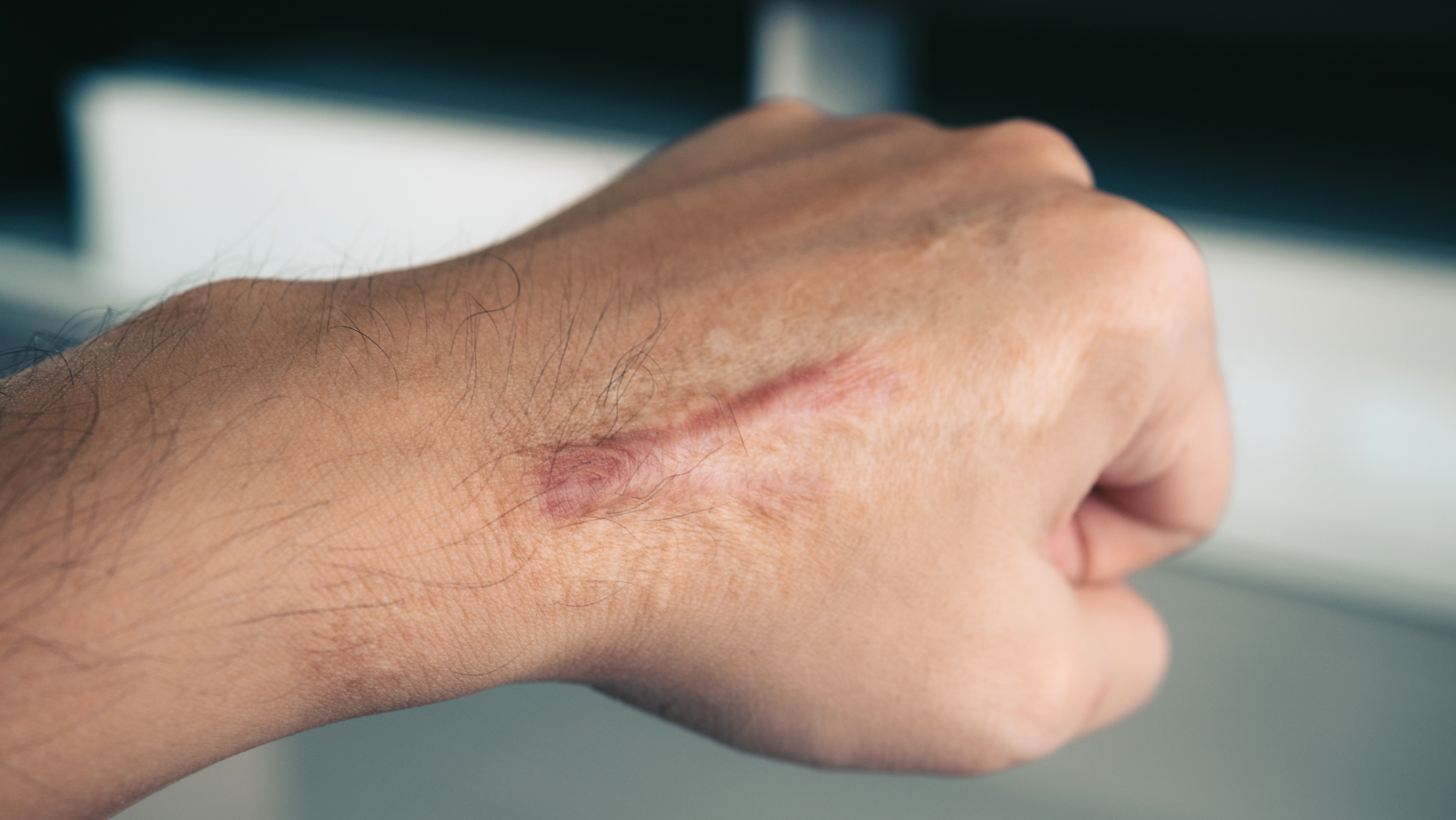Category
Scars are a natural part of the body's healing process,

Have any questions?
If you have any questions, feel free to contact us at [email protected]. A member of our support team will help you shortly.
Share this blog
Fatigue
Energy
Stress
Sleep
Scars are a natural part of the body's healing process, but their appearance and impact on skin texture can vary. Whether resulting from surgery, injury, or skin conditions, understanding the types, causes, and effective treatment options for scars can empower individuals to manage their skin's health and appearance.
Keloids are raised, thickened scars that extend beyond the original injury site. They result from an overproduction of collagen during the healing process, often more common in individuals with darker skin tones.
Like keloids, hypertrophic scars are raised and red, but they remain within the boundaries of the original wound. They may gradually fade over time.
Atrophic scars are characterized by a loss of tissue, resulting in a depressed or sunken appearance. Examples include icepick scars (narrow and deep) and boxcar scars (wider depressions with defined edges).
Common after burns, contracture scars cause skin tightening, potentially affecting movement. These scars can be profound and may require medical attention.
Acne scars can take various forms, including icepick, rolling, or boxcar scars. They often result from inflammatory acne and can impact skin texture.
Scars form part of the natural healing process when the skin repairs itself after injury, surgery, or certain skin conditions.
Surgical incisions leave scars, and the size and appearance depend on factors such as the surgeon's technique and individual healing capabilities.
Burn injuries, whether from flames, hot surfaces, or chemicals, can lead to scars. Contracture scars are widespread after severe burns.
Conditions like acne and certain skin diseases can result in scarring, affecting the face and other body parts.
Over-the-counter or prescription creams and ointments containing ingredients like silicone, vitamin E, or onion extract can help improve the appearance of scars.
For raised scars like keloids or hypertrophic scars, corticosteroid injections can reduce inflammation and flatten the scar tissue.
Laser treatments can target specific pigments in scars, helping to improve colour and texture. Fractional laser therapy stimulates collagen production, aiding in scar remodelling.
Microneedling involves creating tiny punctures in the skin to stimulate collagen production, promoting smoother skin texture and minimizing scars.
In some cases, surgical revision may be recommended for large or persistent scars to remove the existing scar and close the wound to minimize scarring.
Applying pressure dressings or silicone sheets to scars can help flatten and reduce their visibility. This method is often used for hypertrophic and keloid scars.
Injecting fillers beneath atrophic scars can raise the skin's surface, reducing the depression and creating a smoother appearance.
Understanding the types, causes, and treatment options for scars is crucial for effective management. While completely removing scars may not be possible, various treatments can significantly improve their appearance and texture. Choosing the right approach depends on the type and severity of the scar, as well as individual factors such as skin type and healing capabilities. Consulting with a dermatologist or healthcare professional can provide personalized guidance on the most suitable scar management plan. Embracing the available treatments empowers individuals to take control of their skin health and boost their confidence in their appearance. If you have concerns about a scar or are considering treatment options, seeking professional advice is the first step toward effective scar management.